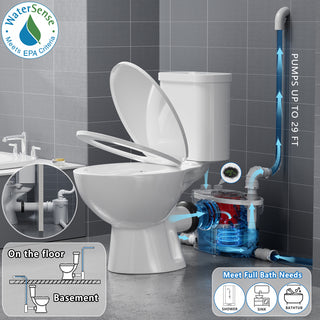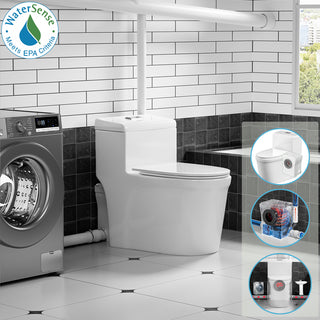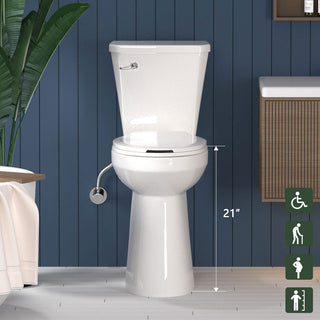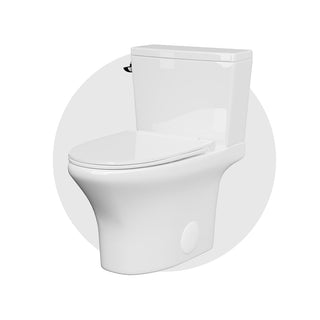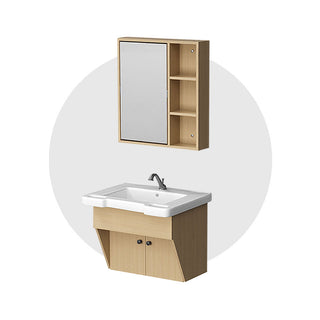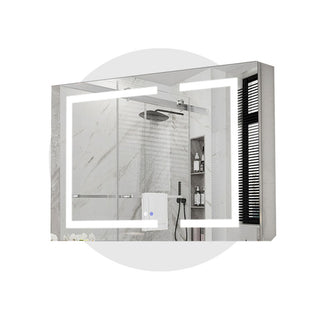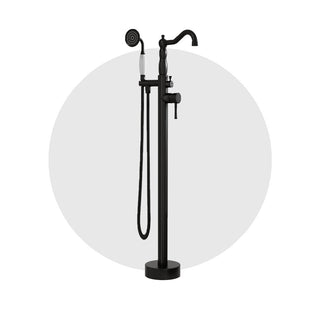Introduction
If you're planning to install a macerator toilet in a bathroom that already has a floor flange, you might wonder:
Can you still use the macerator? And what should you do with the existing flange?
While macerators are often used in bathrooms without traditional plumbing, some homeowners choose them even when a toilet flange is present—for example, to relocate a toilet, avoid major plumbing work, or deal with low drainage levels in a basement.
The good news is: a pre-existing flange doesn’t prevent you from installing a macerator. But there are a few things you’ll want to consider. Let’s take a closer look.
Ⅰ. What Is a Toilet Flange and Why It Matters
A toilet flange (also called a closet flange) is the round pipe fitting that connects a standard floor-mounted toilet to the drainpipe below. It anchors the toilet to the floor and seals the connection between the toilet’s outlet and the waste line.

In traditional plumbing setups, the flange is essential for waste to flow downward through gravity. However, it becomes less relevant when you're switching to a macerator toilet, which uses a different type of drainage system.
Ⅱ. How Does a Macerator Toilet Work?
Unlike regular toilets that rely on gravity to flush waste downward through a floor flange, a macerator toilet uses an electric pump to discharge waste. The system typically:
- Connects to the rear of the toilet (horizontal discharge)
- Pumps the waste through a small-diameter pipe to the home’s main drain line or septic tank.
! Bottom line: A macerator toilet doesn’t connect to a floor flange at all—it bypasses it entirely.
Ⅲ. Can You Use a Macerator Toilet with an Existing Flange?
Yes, you can. A pre-existing toilet flange doesn’t interfere with the function of a macerator toilet. However, it may still affect the physical installation of the new toilet.
✅ If the flange is out of the way
If the existing floor flange doesn’t interfere with the placement of the toilet base, it can usually be left in place—just make sure it’s properly sealed to prevent odors or moisture issues.
For a cleaner look, especially in open or modern bathrooms, you may also choose to further conceal or cover the old flange with a floor plate or finishing material.
⚠️ If the flange becomes a physical obstruction
In some cases, the flange may get in the way of the macerator toilet’s base or pump unit. This could interfere with leveling, anchoring, or alignment. For example:
- The flange may raise part of the floor surface unevenly
- It could block screw holes or mounting hardware
- It might prevent the unit from sitting flush against the wall or floor
When this happens, you have a few options:
- Seal the flange with a cover plate or wax-free cap, then level the floor surface as needed
- Trim or remove the flange if it protrudes above the floor; or raise the toilet base slightly using mortar or a leveling platform

- Shift the position of the macerator toilet slightly to avoid the obstruction—if space allows
! Keep in mind: the flange has no role in the macerator system’s plumbing. It just needs to stay out of the way structurally.
Conclusion
You can absolutely use a macerator toilet in a bathroom with a pre-existing floor flange—but the flange is no longer part of the plumbing connection. As long as it doesn't physically interfere with the installation, you can either leave it in place or seal and cover it.
Before getting started, double-check the layout to ensure the flange won’t obstruct the toilet base or rear discharge pipe. With proper planning—and a bit of flexibility—a macerator toilet makes it possible to add a bathroom almost anywhere.
 When in doubt, consult a plumber. If you’re unsure about sealing, leveling, or removing an existing flange, a licensed professional can help ensure everything is safe, functional, and code-compliant.
When in doubt, consult a plumber. If you’re unsure about sealing, leveling, or removing an existing flange, a licensed professional can help ensure everything is safe, functional, and code-compliant.
📌 FAQs
Q: Do macerating toilets connect to the floor flange?
No. Macerators discharge waste through a rear or side outlet, not through the floor flange. The flange is not used at all in their setup.
Q: Should I remove the old flange before installing a macerator toilet?
Not necessarily. If it doesn’t interfere with installation, you can leave it. If it's in the way, seal or remove it.
Q: Can I use an upflush toilet with an existing flange?
Yes—upflush macerator systems can be installed near or even over old flanges, as long as they don’t obstruct the system’s components.


